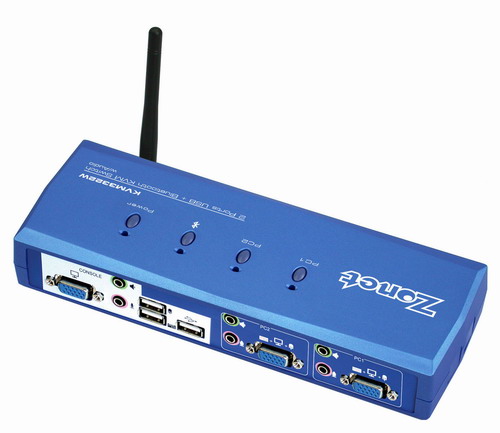The KVM switch (abbreviation for keyboard, video or visual display unit, mouse) is a hardware input device that allows the user to exercise control over multiple computer using a single video monitor, mouse and keyboard.

The remote KVM devices are further divided into two main types the local remote and the KVM over IP. In the local remote KVM device the users can control computer equipment within 300 meters of range. In this type a standard category 5 cabling is used which makes the use of proprietary protocols across a closed loop local area network infrastructure. With this type of connections the users can operate the computer in real time as there is no noticeable latency.

The KVM over IP type device uses the micro-controller and specialized video captured hardware for capturing video, mouse and keyboard signals. The signals captured are compressed and converted into packets which are further send over an Ethernet link to a remote control application where they get unpacked and they reconstitute the dynamic graphic image. The KVM over IP are connected to the systems standby power place which allows its availability during BIOS boot process. With the KVM over IP connections the users can connect and control multiple computers across WAN, LAN and telephone line with the help of TCP/IP protocols.
The type and number of devices to be connected depend on factors like area, number of computers and range. Usually a KVM switch is more beneficial in the areas where multiple computers need to be connected without having separate keyboard, mouse or monitor for each computer.
hi nice info i want to add some info….. KVM Switch is useful where there are multiple computers, but no need for a dedicated keyboard, monitor and mouse for each one. They are frequently used in data centers where multiple servers are placed in a single rack with a single keyboard, monitor and mouse. A KVM switch then allows data center personnel to connect to any server in the rack. A common example of home use is to enable the use of the full-size keyboard, mouse and monitor of the home PC with a portable device such as a laptop, tablet PC or PDA, or a computer using a different operating system
I like the article